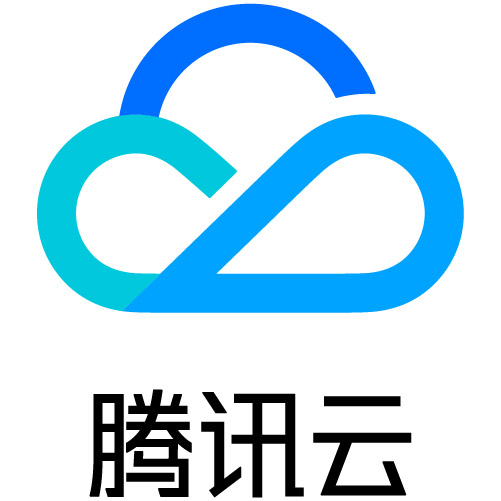把node.js代码集成到 chrome插件代码中
Node.js 作为构建工具:你可以使用 Webpack、Parcel 等工具来构建和打包 Chrome 插件的资源。Node.js 作为后端服务:你可以创建一个 Node.js 后端服务,通过 HTTP 与 Chrome 插件进行通信,处理复杂的 API 请求或数据操作。在插件中使用 Node.js 模块:使用 Webpack 等工具,将一些 Node.js 模块打包成浏览器兼容的 JavaSc
在开发 Chrome 插件时,Node.js 代码不能直接嵌入浏览器端的 JavaScript 文件,因为浏览器并不支持 Node.js 的内建模块(如 fs、path 等)。但是,你可以通过以下几种方式将 Node.js 代码与 Chrome 插件集成:
1. 使用 Node.js 作为开发工具(构建和打包插件)
虽然浏览器端的代码不能直接运行 Node.js,但你可以使用 Node.js 作为构建工具来帮助打包和编译 Chrome 插件的资源。常见的工具包括 Webpack、Parcel 或 Gulp,这些工具利用 Node.js 来处理文件、编译、打包、压缩等操作。然后将这些打包后的文件部署到插件中。
示例:使用 Webpack 打包插件资源
-
安装依赖:
首先,安装 Webpack 和 Webpack CLI:npm init -y npm install --save-dev webpack webpack-cli webpack-dev-server -
配置 Webpack (
webpack.config.js):const path = require('path'); module.exports = { entry: './src/popup.js', // 入口文件 output: { filename: 'popup.bundle.js', // 打包后的文件 path: path.resolve(__dirname, 'dist') // 输出目录 }, mode: 'development', // 开发模式 }; -
编写 Chrome 插件的前端代码(例如
popup.js):console.log("Hello, this is the popup script!"); -
创建插件的 HTML 文件 (
popup.html):<!DOCTYPE html> <html lang="en"> <head> <meta charset="UTF-8"> <meta name="viewport" content="width=device-width, initial-scale=1.0"> <title>My Chrome Extension</title> </head> <body> <h1>Chrome Extension</h1> <script src="popup.bundle.js"></script> </body> </html> -
运行 Webpack:
在命令行中运行:
npx webpack --config webpack.config.js -
配置 Chrome 插件的
manifest.json:{ "manifest_version": 3, "name": "My Chrome Extension", "version": "1.0", "description": "A Chrome extension with Webpack", "background": { "service_worker": "background.js" }, "action": { "default_popup": "popup.html" }, "permissions": [ "storage" ], "host_permissions": [ "https://api.example.com/*" ] }
2. 使用 Node.js 后端服务与 Chrome 插件通信
你也可以将 Node.js 用作 后端服务,并通过 HTTP 请求与 Chrome 插件进行通信。这种方法适用于当你需要进行复杂的计算、调用外部 API 或处理大量数据时。
示例:使用 Node.js 作为后端与 Chrome 插件通信
-
创建 Node.js 后端服务(使用 Express):
npm install express在
server.js中创建一个简单的后端 API:const express = require('express'); const app = express(); const port = 3000; app.get('/api/greeting', (req, res) => { res.json({ message: 'Hello from Node.js backend!' }); }); app.listen(port, () => { console.log(`Server running at http://localhost:${port}`); }); -
运行 Node.js 后端服务:
在命令行中运行:
node server.js这将启动一个 Node.js 服务器,监听端口 3000。
-
Chrome 插件调用 Node.js 后端:
在 Chrome 插件的前端代码(例如
popup.js)中,使用fetch调用 Node.js 后端:document.getElementById('callApiBtn').addEventListener('click', async () => { try { const response = await fetch('http://localhost:3000/api/greeting'); const data = await response.json(); console.log(data.message); // 输出:Hello from Node.js backend! } catch (error) { console.error('Error:', error); } }); -
插件的 HTML 和
manifest.json文件配置:popup.html:<!DOCTYPE html> <html lang="en"> <head> <meta charset="UTF-8"> <meta name="viewport" content="width=device-width, initial-scale=1.0"> <title>My Chrome Extension</title> </head> <body> <h1>Chrome Extension</h1> <button id="callApiBtn">Call API</button> <div id="response"></div> <script src="popup.js"></script> </body> </html>manifest.json:{ "manifest_version": 3, "name": "My Chrome Extension", "version": "1.0", "description": "A Chrome extension with Node.js backend", "background": { "service_worker": "background.js" }, "action": { "default_popup": "popup.html" }, "permissions": [ "storage" ], "host_permissions": [ "http://localhost:3000/*" ] }
3. 使用 Node.js 模块(通过 Webpack)
如果你需要在插件中使用 Node.js 模块(如 fs、path、axios 等),你可以通过 Webpack 或 Browserify 将它们打包成浏览器兼容的代码。以下是如何将 Node.js 模块打包到插件中的基本步骤:
示例:在 Webpack 中使用 Node.js 模块
-
安装依赖:
npm install --save-dev webpack webpack-cli webpack-node-externals npm install axios -
创建 Webpack 配置:
在
webpack.config.js中配置 Webpack,使其能够打包 Node.js 模块:const path = require('path'); const nodeExternals = require('webpack-node-externals'); module.exports = { entry: './src/popup.js', output: { filename: 'popup.bundle.js', path: path.resolve(__dirname, 'dist'), }, target: 'web', // 确保是浏览器环境 externals: [nodeExternals()], // 排除 Node.js 内置模块 mode: 'development', }; -
使用
axios调用 API:在
popup.js中,使用axios发送请求:import axios from 'axios'; axios.get('https://api.example.com/data') .then(response => { console.log(response.data); }) .catch(error => { console.error('Error:', error); });
总结
- Node.js 作为构建工具:你可以使用 Webpack、Parcel 等工具来构建和打包 Chrome 插件的资源。
- Node.js 作为后端服务:你可以创建一个 Node.js 后端服务,通过 HTTP 与 Chrome 插件进行通信,处理复杂的 API 请求或数据操作。
- 在插件中使用 Node.js 模块:使用 Webpack 等工具,将一些 Node.js 模块打包成浏览器兼容的 JavaScript 代码,在插件中使用。
这种方式允许你将 Node.js 与 Chrome 插件结合使用,提升开发体验并扩展插件的功能。
更多推荐
 已为社区贡献3条内容
已为社区贡献3条内容








所有评论(0)